It would be amazing if you could create a product or service and people started lining up to buy.
Unfortunately, that rarely happens in the 21st century.
There’s too much competition and choice for people to miraculously notice you.
So what do you do?
How do you bridge the gap between where you are and where you want to be with your products and services?
The answer is demand generation.
If knowing the term could solve all your problems then we probably wouldn’t be here.
In this article, you’ll get an in-depth understanding of what demand generation is, different strategies to implement it, and demand generation examples.
Table of Contents
What is Demand Generation
Demand generation is a collection of marketing programs or initiatives created for your target market that builds awareness and interest in your products and services.
The key to demand generation is that it’s not a one-off experience or campaign. It’s a sustained effort that usually encompasses more than one channel, involves a sales team, and varies in complexity based on the product you’re selling and the price point.
Most demand generation campaigns are created by B2B, business to government, and business to prosumers companies. B2C companies tend to remove the sales team because the price points allow people to buy with little thought. Of course, there are common exceptions to this rule like cars. They’re sold to consumers but there’s a demand generation process in place because it’s an expensive purchase.
A common part of a demand generation strategy company’s use is attending events and setting up booths. IFTTT, which targets consumers and businesses, takes it a bit further by handing out socks with their logo on it. It may not make you buy but it is an interesting way to create awareness.

I’m sure you’ve seen the statistics which state the majority of small businesses fail within a few years. What you may not know is that 42% fail because there’s no market need and another 14% fail because of poor marketing. Both of these issues could be addressed by demand generation.
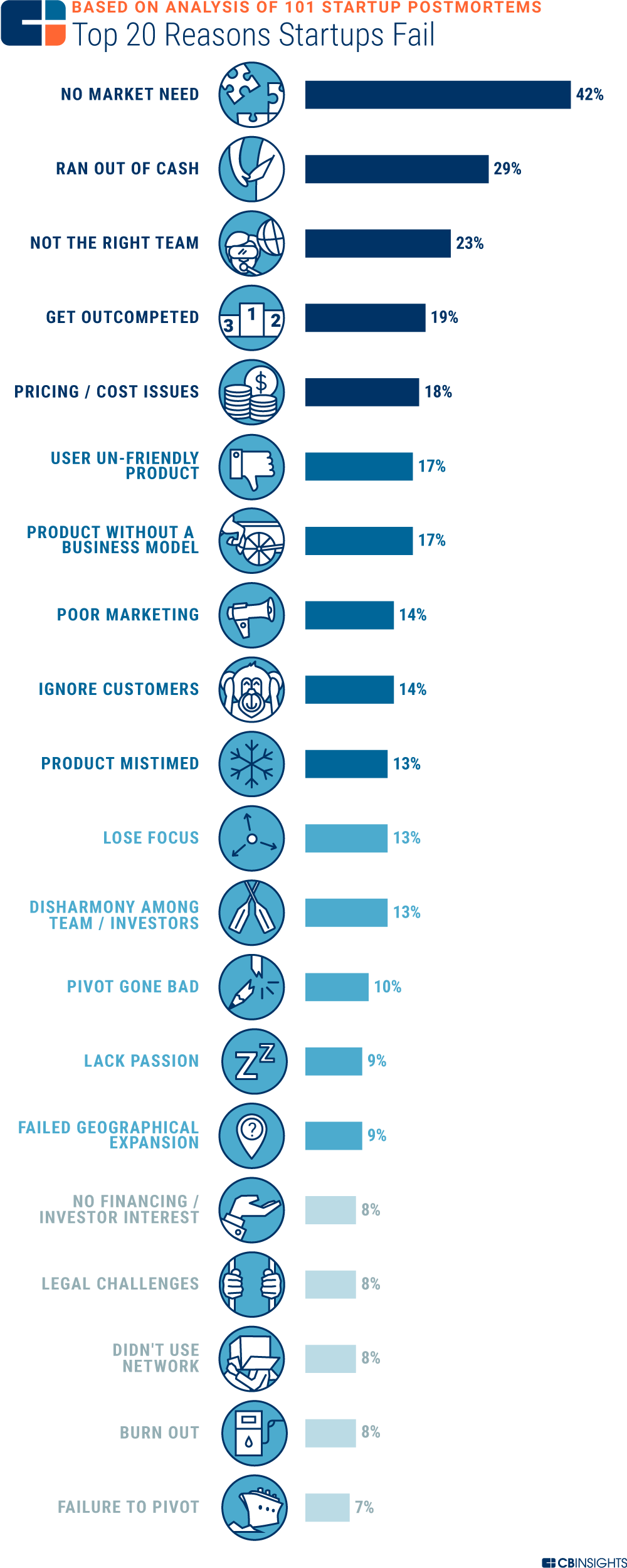
Before we dive into demand gen properly, it’s important to know the difference between it and lead generation.
Demand generation vs lead generation
Demand generation and lead generation are often confused and, as a result, are used interchangeably.
This is a mistake.
Part of the reason why they’re confused so much is because there’s a lot of overlap. Demand gen, when done right, flows right into lead generation. At times, the things you do for demand generation also produce qualified leads.
For example, Coschedule has a headline analyzer that requires you to put in your email address before you use it.
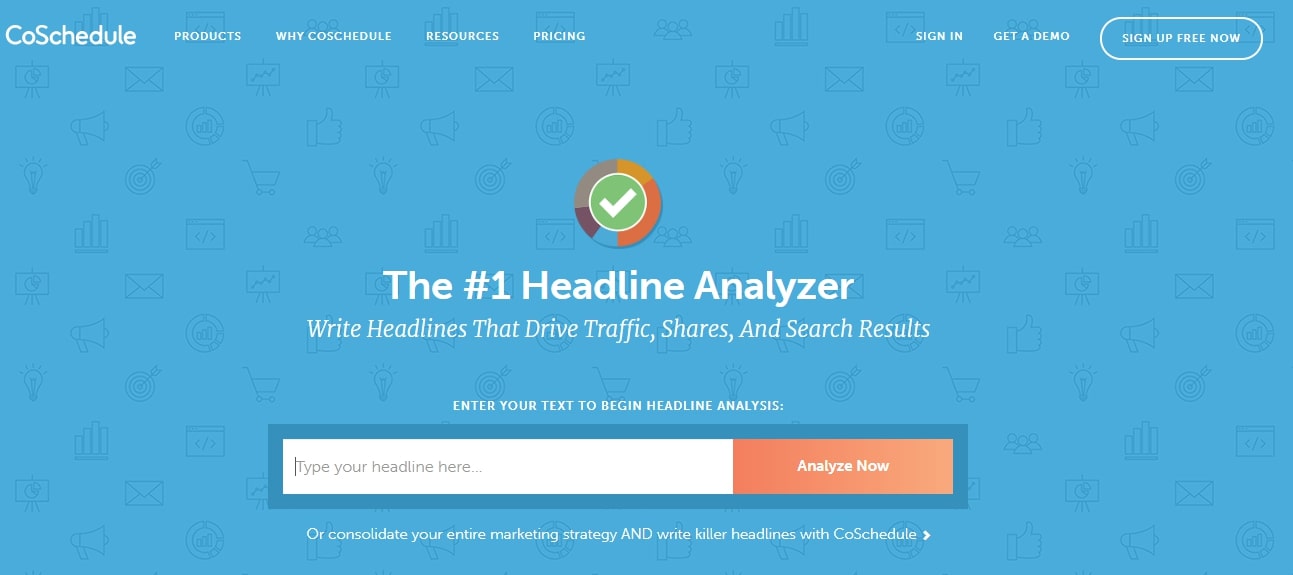
It creates awareness about the brand while also capturing contact information.
We’ve already established what demand generation is so let’s look at the definition of lead generation.
Lead generation is the process of turning prospects or potential customers into leads which you can eventually turn into customers. There are many types of leads including marketing qualified leads (MQL), product qualified leads (PQL), and sales qualified leads (SQL).
Not every business makes a distinction between the different types of leads. At times it’s not necessary.
An organization will create a lead magnet which can take many forms such as:
- Gated content
- White paper
- Ebook
- Email course
- Product demos
- Content upgrades
- Useful tools like our email ROI calculator
- etc.
What you can use for lead generation is only limited by your imagination.
Demand generation gets people to interact with your brand and check out your products. Lead generation is a method you use to capitalize on the attention. They go hand in hand.
Demand generation marketing
Just like with lead magnets, there are many ways to build awareness and interest in your products. They go by many names such as guerilla marketing, content marketing, social marketing etc. but it’s all demand generation.
Instead of getting caught up in a specific strategy or channel, focus on how well it’s working for your business.
- Are you hitting your sales targets?
- Is the performance within KPIs you set?
- Does the acquisition cost line up with what you’re seeing from other channels?
- What’s the retention rate of people who join via one channel vs another?
The questions you ask will – of course – depend on your business.
Here are 7 demand gen strategies you can use to create awareness and grow your business.
1. Social ads
Ads are one of the fastest ways to create awareness around a new product or service. You’re able to get in front of different audiences and show them a message that’ll appeal to them.
The rise of social media has taken advertising to another level. Before, you’d have to create an ad for a newspaper or magazine, shell out thousands of dollars, and hope it worked.
Now, you can test campaigns with just a few dollars, refine your messaging so it matches your audience, and reap the rewards. On top of that, your prospects are on social media. Facebook alone boasts over a billion daily active users.
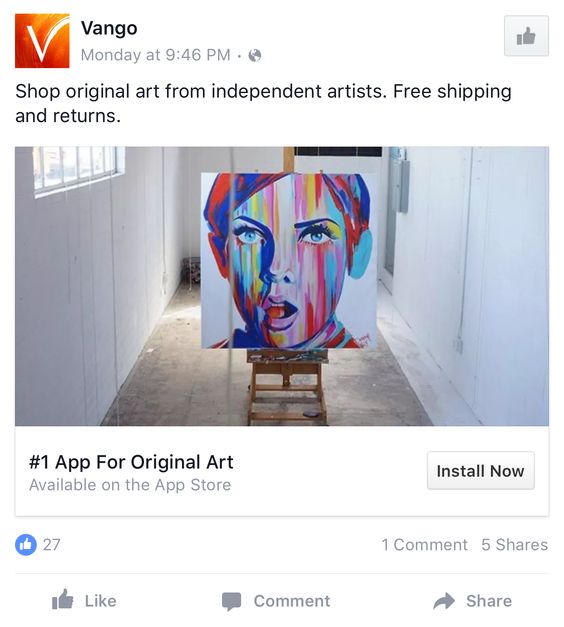
Vango curates original art and makes it easy for consumers to find what they want and also buy. The ad above communicates the core value proposition and a benefit in a clear way so interested users can focus on the call to action.
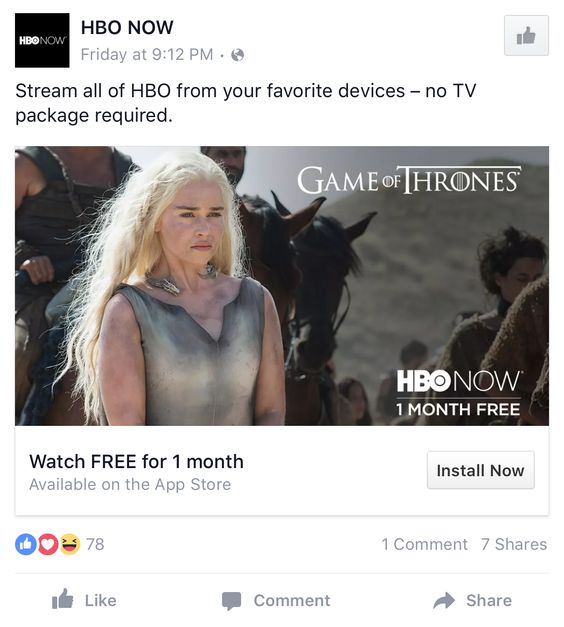
Game of Thrones, the uber-popular HBO adaptation, was pirated billions of times during its long run. Needless to say, people know what it is and can’t seem to get enough. HBO capitalizes on this popularity by making an ad that puts the show front and center.
2. Retargeting ads
It’s been said many times that someone needs to be exposed to a message up to seven times before they take action on it. The internet is no different.
Depending on the statistic, more than 75% of your visitors will never come back. They land on your website, consume your content, and leave. The relationship is over before it began.
Retargeting is an effective strategy to continue showing your messages to potential customers without overspending. The key is to choose the platforms where you can reach your prospects.
Google Display Network and Facebook Audience Network reach almost every internet user in the world. GDN alone can get you in front of 90% of internet users. 65% see an ad served by Google every single day.

LeadPages uses a different approach to retargeting. Instead of sending a retargeting message to everyone that visits its website, it segments its audience based on what they’ve shown interest in.
If someone lands on a product page then they get a different retargeting ad from someone that landed on a blog post. In the image above, the ad is for someone who viewed a relevant article. After clicking on the ad and not converting, the visitor is immediately retargeted with a different message.
3. Free tool or resource
All of us use tools to get work done or make life a bit easier. Creating a useful tool for demand gen is a strategy that’s been proven to work time and again.
I’ve shared the example of CoSchedule with their headline analyzer. It’s relevant to their audience but isn’t directly tied to their core business – a marketing calendar.
Moz took a slightly different approach. It spent a lot of time and energy creating a suite of SEO tools for the SMB market. The only problem was that SMBs weren’t well versed with SEO and it’s sometimes complicated metrics.
They also weren’t the best at using the tools Moz created for competitive analysis so it like more of a luxury than a necessity. In response to this gap in perception, Moz created a free toolbar and a free account. After a user downloads it, they’re able to get basic metrics about websites while browsing the internet.
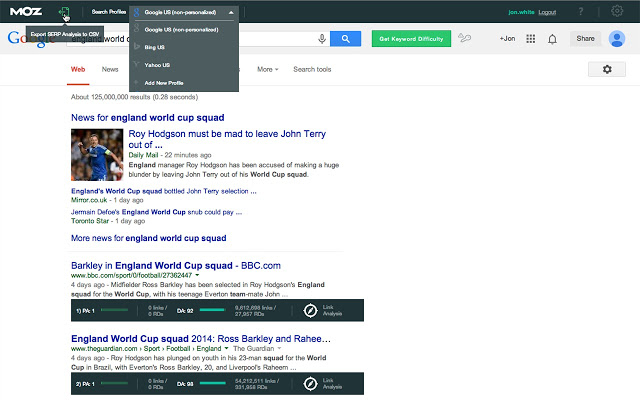
Eventually, the free user will upgrade to get access to the full suite of tools and metrics it generates.
The team behind Unsplash didn’t have a problem with customer education. The problem was generating awareness about the services it offered. One day, the team had a photo shoot for their website redesign and were left with a lot of unused images. Instead of storing them on a hard drive somewhere, they decided to set up a microsite and give the images away.
The website blew up almost overnight and saved the struggling agency. That company was Crew (now part of Dribbble) and the website they built is called Unsplash.
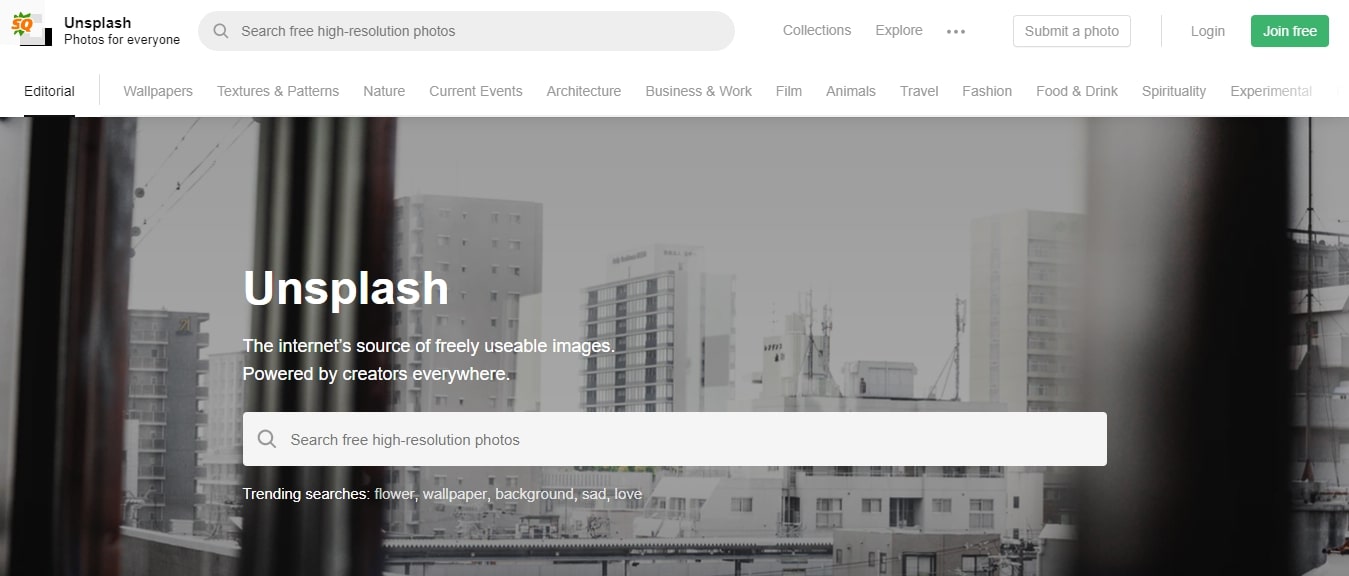
It has since been sold but it’s the perfect example of how a resource can create demand that builds your customer base.
4. Content marketing
Over the last few years, content marketing has become an incredibly popular way to create awareness. With that popularity comes competition. Today, over four million blog posts have been published.
With that being said, companies are still reaping the rewards from it. 62% of B2B marketers say their content marketing is getting more successful.
To further enhance your demand generation strategies, consider featuring expert marketing speakers who can share valuable insights and innovative approaches to drive growth and engagement.
The key is to create better content and match your strategy to the needs of your audience.
A proven strategy for attracting more eyeballs is using proprietary research. Almost every company has data in some form or another that people would find interesting.
OKCupid uses the information it gets from users to create compelling blog posts and infographics around dating issues.
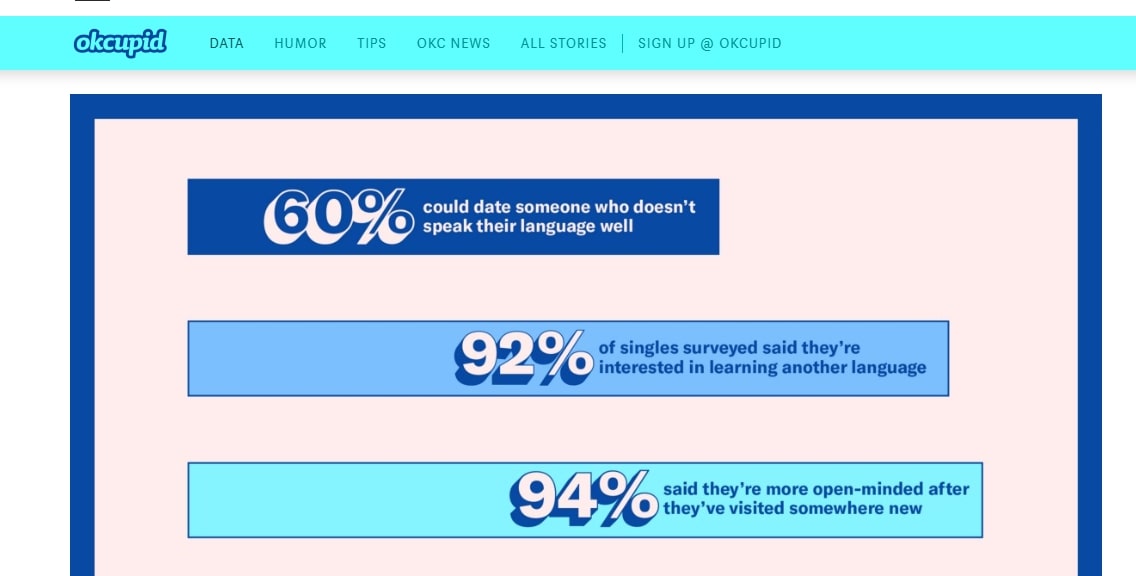
Dig through your data or partner with data geeks to find insights that would appeal to your target audience.
5. Webinars
I hesitate to mention webinars because they’ve been abused in many markets. I’ve personally attended webinars that were nothing more than a thinly-veiled sales pitch. The presenter talked about their accomplishments and the results of their students for 30 minutes then sold us for the other 30 minutes.
Don’t be that person.
Webinars, when used properly, are an effective way to connect with your audience. Create demand, generate leads, and sell all at once.
Make a presentation with a solid webinar platform that’s relevant to your product and the needs of your audience. For example, if you were selling a marketing automation tool, you could create a webinar about “the must-have marketing automations for your business.”
It’s possible to use ads to get people to sign up for your webinar. An even better strategy is to partner with companies who’re targeting the same audience but don’t compete with you directly.
That’s what Unbounce does with many of its webinars. In the example below, it partnered with Larry Kim to produce a webinar that’s relevant to Unbounce and WordStream.
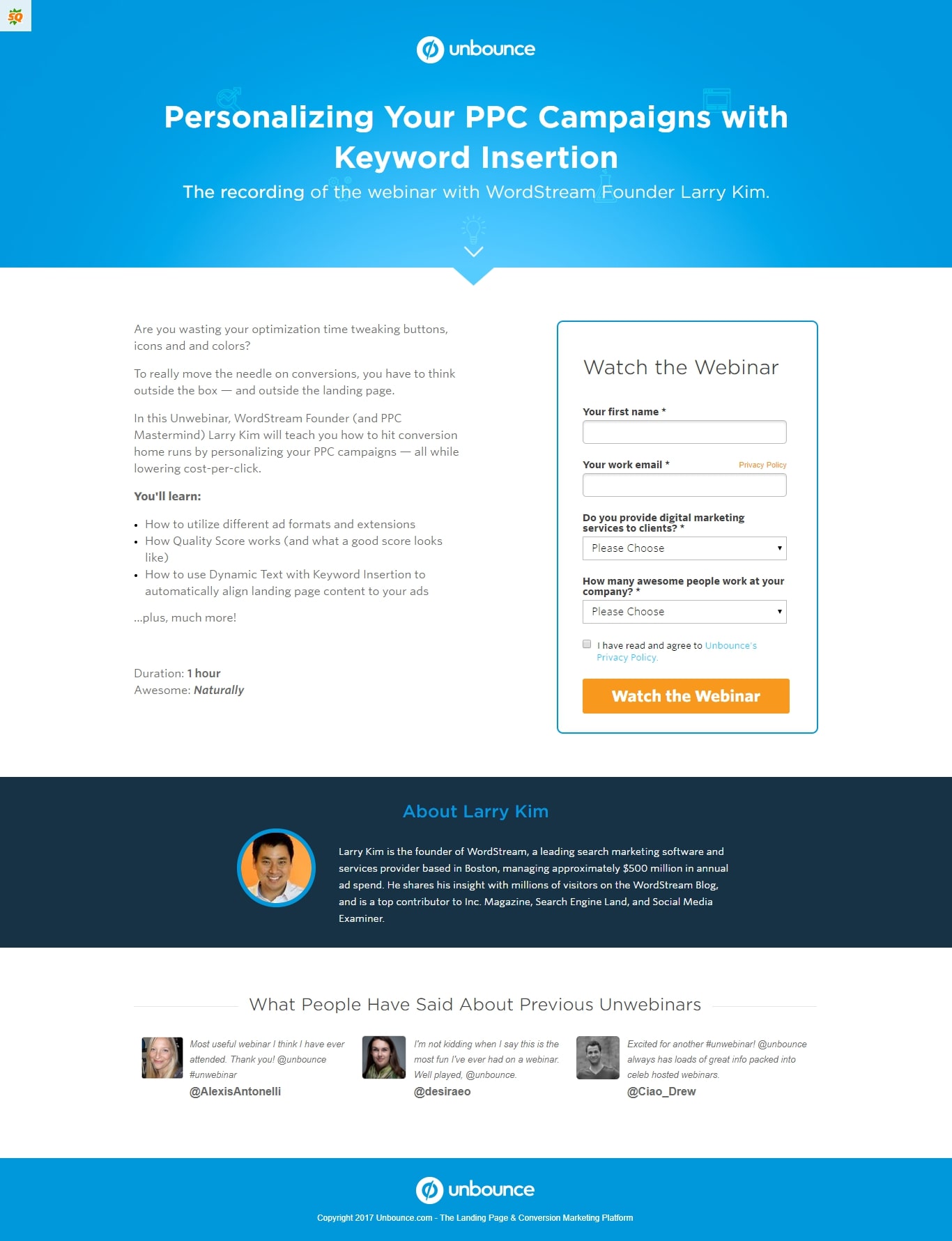
6. Syndicated content
Quality content is a welcome addition to major publications. They’ll happily take your content and republish it for their readers while leaving most of it as is. You hit your demand generation targets and they’re able to keep readers coming back. Everyone wins.
In the image above, the content was syndicated from Quora to Forbes and many of the author’s links were left intact. His company was even given a mention in the byline.

NerdWallet also used this strategy to land a content syndication deal with The Associated Press which distributed its content to over 1,500 media outlets. Each one had an honorable mention which helped NerdWallet grow to over 1M monthly visitors.
There are two aspects to this demand generation strategy:
- Finding the right partners you can fill a need for
- Building a reputable catalog of digital content which can be syndicated to partners
7. Events
Events may be the oldest method of demand generation. There are multiple ways to use events to create awareness and there’s a growing trend that uses experiential marketing.
Don’t think events are limited to the offline world with things such as meetups, industry conferences, and trade shows. More and more people are using digital summits to create the same – in some cases more – amount of awareness for their products and services.
Live streams and virtual events now challenge organizers to recreate the energy and visual polish expected from in-person gatherings, necessitating a keen eye for compelling compositions when hiring an event photographer near me.
Though online presentations skip the logistics of physical venue coordination, stimulating backdrops still make speaker spotlighting more engaging, cuing brands to line up artistic photojournalists adept at flattering from afar.
Just as digital marketplaces simplified booking calendars with local event pros nationwide, virtualized conferences expanded access to specialized networkers and speakers; now sought-after photographers near prominent industry hubs provide remote imaging services.
Even automated conferencing platforms limit the customization required for hybrid events blending remote presenters with intimate local audiences, making an adaptable photographer’s creativity essential to bridging online and offline engagement.
You get to tap the audience of your speakers as well as your own audience to create a unique experience. At the same time, you can continue to use the recordings for lead and demand generation.
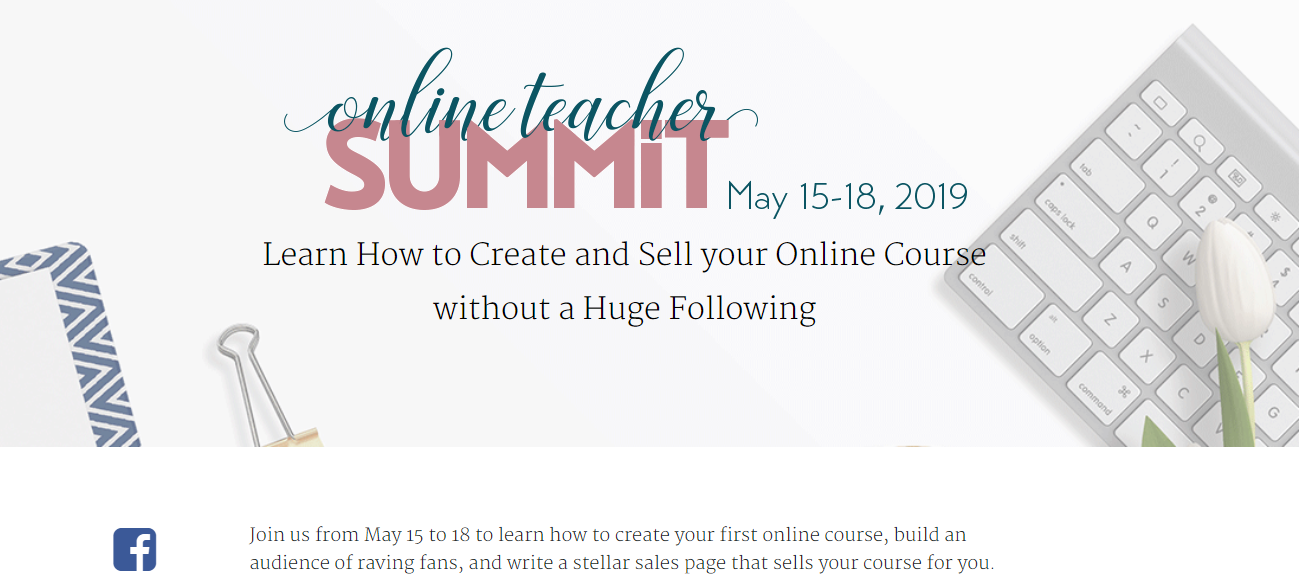
Teachable used a summit to educate its current users, tap into the audiences of popular course creators, and generate demand for its core product.
Whichever demand generation strategy you choose, be sure to stick with it long enough to understand whether or not it’s working. What often happens is people start using a strategy, don’t get instant results, and quit. In reality, these things take testing and refinement to get right.
Before we call it quits, there’s one more thing to take note of, lead nurturing.
Lead nurturing and demand generation
It’s common for businesses to focus on acquisition while forgetting about the people who’ve expressed early interest. These are the people who’ve signed up for your mailing list, push notifications, etc.
They’ve not purchased from you or the initial welcome campaign didn’t get them to buy. Instead of forgetting about them, it’s important to continue nurturing them over time.
Effective lead nurturing campaigns are more than a few emails sent over the course of two or three weeks. They take into consideration the way prospects are interacting with emails, the pages they visit on your website, and who the prospect is.
In short, they need to be segmented so you can send relevant messages. That’s when your demand generation truly yields fruits, not before.
Conclusion
Demand generation is an important aspect of any business. Without it, people won’t know who you are and can’t buy from you. With it, you open the doors to continued growth.
This article has looked at what it is and the nuances of implementing it for your business. It has also looked at a few strategies you can start using.
Choose a few to get the ball rolling and measure its efficacy over time. If it works for you then double down while still testing other ones so you can build out effective channels for growth.
Let me know what you think about demand generation and the strategies you’re using in the comments and don’t forget to share.